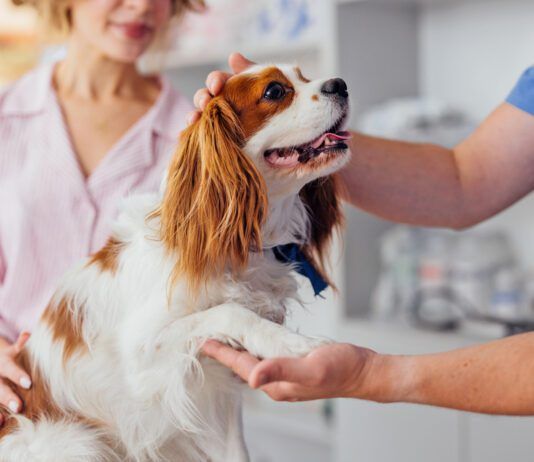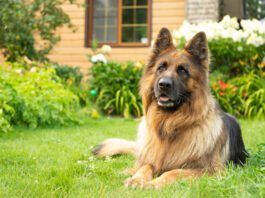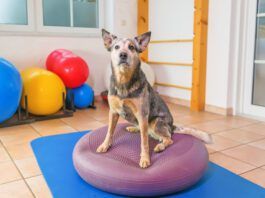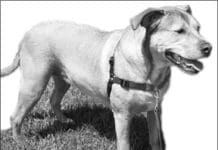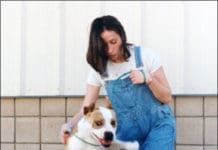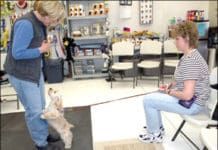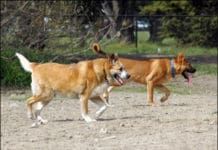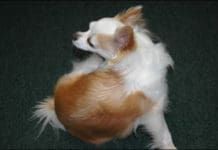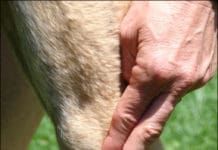Nocturnal Dogs
and matching leash all get softer with time and laundering. I like the extra large D-ring for snapping the leash onto.
Getting to Know Your Dog
It's going to be really difficult to stay caught up with everything we've been going through with our new dog, Otto. Every day brings...
Socializing a Shy Dog
Somewhere at this very moment, perhaps at a shelter near you, a frightened dog huddles in the back of her kennel, trembling, terrified by a chaotic overload of sensory stimuli: sights, smells, and sounds that are far beyond her ability to cope. Somewhere, today, a warmhearted, caring person is going to feel sorry for this dog - or one similar - believing that love will be enough to rehabilitate the frightened canine. Sometimes, it is. More often, though, the compassionate adopter finds herself with a much larger project than she bargained for. While shelters can a prime source for frightened and shy dogs, they are certainly not the only source. Pet stores, puppy mills, rescue groups, and irresponsible breeders (even some who breed top quality show dogs) can all be guilty of foisting off temperamentally unsound (due to genetics/nature) or under-socialized (due to environment/nurture) puppies and adult dogs on unprepared adopters.
Leashes, Collars, Harnesses: Best Gear for Positive Training
One bright spring Sunday, my husband and I took a motorcycle trip through Virginia, stopping in the dog-friendly town of Leesburg for lunch. As we ate I watched a steady stream of leashed dogs walk by our restaurant window. Before long I noticed a strange consistency: every single dog was wearing a prong collar. The sun dimmed a little for me, because I cannot imagine a training situation for which I would be willing to use a prong collar - and I certainly wouldn't use one as an everyday dog-walking tool. But the collars appeared to be commonly accepted and used in that community. A roomful of dog trainers will never agree on the best equipment for walking, training, or exercising a dog. If you restrict membership in the room to positive" trainers you'll find more agreement
Interactive Dog Toys
Only rarely does a totally new genre of dog toy appear on the market, and it almost never happens that a new genre of toys is introduced with more than just one or two representative products. This rare event was recently engineered by Sweden’s Nina Ottosson, with the introduction of her Zoo Active Games, a line of 10 novel interactive dog toys (and a few cat toys!). As a huge fan of interactive toys for dogs, I was eager to get my paws on as many of the toys as I could, and see if they were as fun for dogs as they looked! The Zoo Active toys are available in the United States from only a select few distributors, including Paw Lickers Bakery and Boutique, owned and operated by Marianne Gage and her son David in Greenfield Center, New York. Fortunately for me, when Whole Dog Journal editor Nancy Kerns contacted David to inquire whether we could test the toys, he generously offered to send me seven of the products to try out. I’ve been introducing the toys to my own dogs for a few months, so I knew they had great “fun potential,” and looked forward to an opportunity to try them out on a bunch of other dogs, too.
Canine Acupressure to Calm High Energy Dogs
These are too-common refrains of guardians of dogs who are bouncing off the walls: "She has way too much energy!" "This dog is out of control!" "I've had enough of this crazy dog, he's a maniac!" You can love your dog to pieces, but if his behavior is unruly, it can be very hard to live with on a steady basis. One of the most common reasons dogs are released to shelters is because they are out of control. Hyperactive dogs are frequently difficult for their owners to enjoy. Surviving this situation may stressful for you, your family, guests - and the dogs themselves. The first step is to have the dog evaluated by your trusted holistic veterinarian, to determine if there is any underlying medical condition. Hyperactivity, also called "hyperkinesis," actually can be the result of a medical condition that is characterized by frantic behavior, incessant movement resulting in exhaustion, a consistent elevated heart rate, panting, loss of weight, vomiting, and increased appetite or loss of appetite. Canine compulsive disorders such as tail-chasing, self-mutilation, and other nonproductive, repetitive behaviors are usually considered forms of hyperactivity.
Train Your Dog to Greet People
Recently, I switched the group class format at my Peaceable Paws Training Center to Levels." Instead of a progressive curriculum with new exercises introduced each week
Mixed-Aged Dog Packs
Can older dogs and younger dogs live happily together? Will a puppy bounding around (and possibly on) the arthritic body of an older dog encourage her to be more active, bringing energy and vitality during senior years? Or will the perfectly normal antics of a young dog aggravate and stress what should be a time of happy retirement for a senior dog? If you've lived with an older dog, you've probably heard someone at some point recommend getting a puppy or younger dog. The advice may be something like, "It will keep your older dog young," or "The new puppy can learn from your older dog." While you will likely find some truth in both statements, the opposite may also hold true. Your older dog could be stressed or exhausted by a younger dog. Your young dog will certainly learn from your older dog, but the lessons may not be those you would like to be passed from one generation to the next.
How to Use Calendula on Dogs
itchy skin: in a clean jar
The Dangers of Vinyl Dog Toys
which are made with natural rubber."
Chiropractors for Canines
Everyone knows that chiropractors are bone and joint doctors. They help alleviate back pain and other aches by making adjustments that improve skeletal alignment and musculoskeletal function. In recent years, chiropractic adjustments have become popular for dogs, especially those recovering from accidents or injuries. But did you know that chiropractic care can improve a dog’s digestion; speed healing after illness or surgery; treat behavior or mood changes; help alleviate ear infections, urinary incontinence, and allergies; and even correct neurological imbalances? Cheryl Morris, DC (Doctor of Chiro-practic), a chiropractor for humans in Congers, New York, knew something was wrong with Stanley Queue, her five-year-old Scottie. He vomited spontaneously three or four times a day several times a week, and when she palpated his abdomen, his diaphragm felt tight.
Five Accupressure Points for Your Dog’s Health
GB 34 maintains the body's ability to move by keeping the tendons and ligaments supple. Stimulating this point will help minimize physical injuries. This point is known to support emotional balance as well.
■Heart 7 (HT 7)


